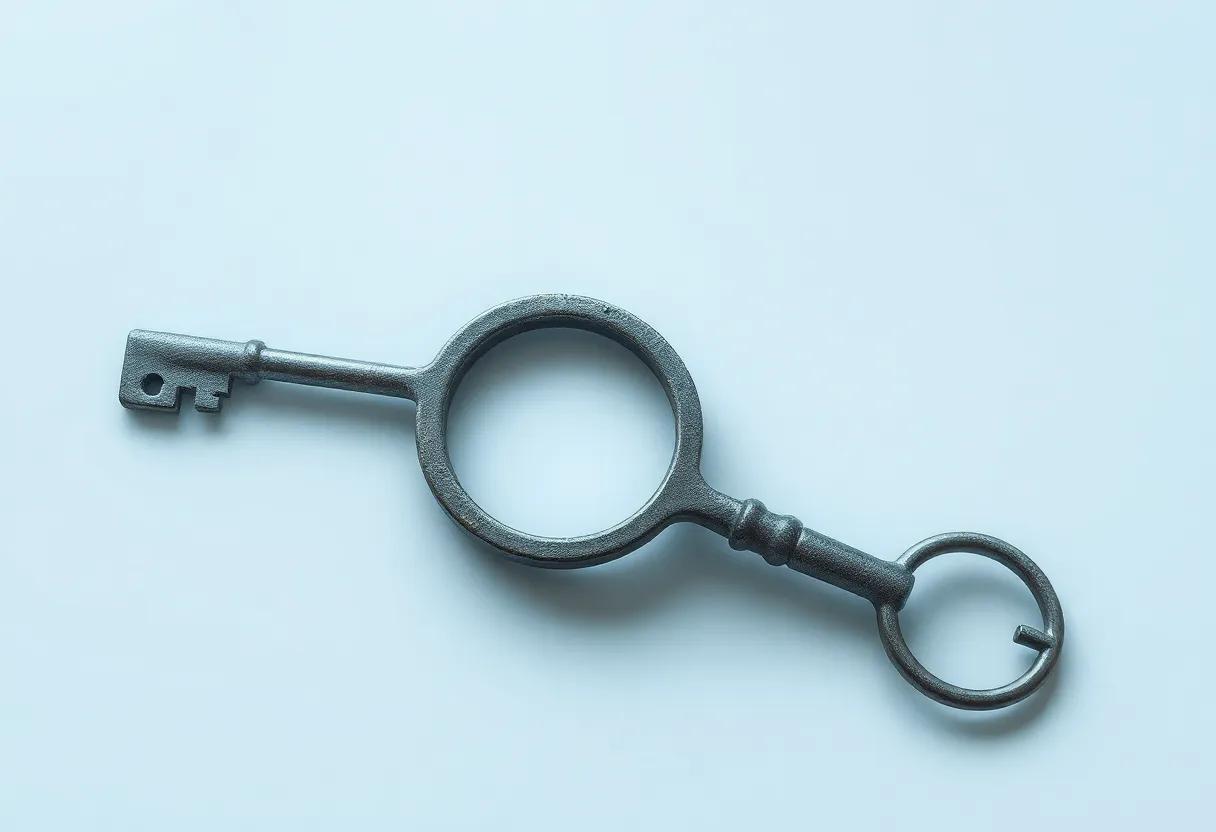In the ever-evolving landscape of psychological thrillers, Ruth Ware has carved a distinctive niche with her ability to weave suspense and intrigue into domestic settings that feel both familiar and unsettling. The Turn of the Key, her latest offering, invites readers into a modern Gothic tale where secrets lurk behind smart home technology and hidden pasts. This review takes a thoughtful journey through Ware’s narrative craft, exploring how she unlocks tension and ambiguity without ever losing sight of the human complexities at the story’s core.
The Intricate Web of Suspense Crafting Tension Through Atmosphere and Pacing in The Turn of the Key
Ruth Ware’s masterful manipulation of atmosphere in The Turn of the Key transforms the setting into more than a mere backdrop; it becomes a living, breathing entity that intensifies the narrative’s suspense. The eerie,isolated estate envelops the story in an unsettling cloak of mystery,where every shadow and creak echoes with hidden threats.This meticulous construction of mood amplifies the psychological tension, making readers question what is real and what lurks in the protagonist’s mind. Through sensory details-flickering lights,sudden silences,and chilling drafts-Ware creates an immersive world where the oppressive atmosphere itself seems to conspire against the characters.
Pacing plays an equally critical role in escalating the tension. Ware expertly alternates between moments of quiet unease and sudden bursts of action, crafting a rhythm that keeps readers perpetually on edge. The narrative unfolds with deliberate restraint, unveiling secrets incrementally to sustain curiosity without overwhelming the audience. Consider the following elements that Ware employs to maintain this delicate balance:
- Fragmented diary entries: Partial revelations that invite speculation and foster paranoia.
- Strategic time shifts: flashbacks interspersed with present-day events heighten suspense and deepen character motivations.
- Cliffhanger chapter endings: Unease peaks just as the story pauses, compelling readers to forge ahead.
| Suspense Technique | Effect |
|---|---|
| Cryptic Lighting | Enhances mystery,fuels paranoia |
| Measured Reveal | Sustains curiosity,manages tension |
| unreliable Narrator | Blurs reality,injects doubt |
Unveiling the Psychological Depths Behind Key Characters and Their Motivations in Ruth Ware’s Thriller
Within the labyrinthine corridors of The Turn of the Key,each character emerges as a kaleidoscope of hidden fears and desires,their motivations intricately woven into the suspenseful fabric of the narrative. The protagonist’s internal struggles mirror the eerie atmosphere of the old smart house, where technology both safeguards and ensnares. This duality invites readers to dissect the psyche behind every choice,unlocking a deeper understanding of how isolation,guilt,and ambition conspire to drive behavior in high-stakes environments.
Examining these psychological layers reveals not only individual conflicts but also broader themes of trust and deception. consider the following facets that shape character motivations:
- Fear of Loss: Characters grapple with the potential loss of family, reputation, or control, fueling their actions.
- Need for Control: The omnipresent smart technology symbolizes a modern desire to dominate chaotic realities.
- Hidden Secrets: Unspoken truths act as silent antagonists, steering decisions and altering perception.
| Character | Primary Motivation | Key Psychological Trait |
|---|---|---|
| Rowan | Redemption | Resilience |
| The Clients | Protection | Distrust |
| The House | Control | Manipulation |
How The Turn of the Key Explores Modern Themes of Trust, Technology, and isolation With Subtle Nuance
Ruth Ware masterfully weaves an intricate narrative that delves deep into the complex interplay between trust and technology in a world increasingly shaped by smart devices and surveillance. The sumptuous, eerie atmosphere of the novel is heightened by the presence of a high-tech home that, rather than offering protection, becomes a symbol of control and invisibility. In this setting, trust is a fragile commodity, fractured not only by human interactions but also by the cold, unblinking gaze of artificial intelligence. The story deftly explores how reliance on technology can amplify feelings of vulnerability, as characters navigate unseen eyes and silent systems that challenge their perceptions of reality and safety.
Isolation here takes on multifaceted dimensions, portrayed through both physical confinement and emotional detachment. The protagonist’s entrapment is not simply geographic but psychological,echoing the modern experience of solitude amplified by digital surveillance. Ware’s subtle use of the home’s smart features to manipulate privacy invites readers to question the cost of convenience, as well as how isolation can be engineered in spaces meant to be sanctuaries.This nuanced approach shines through in themes including:
- Human connection versus automated presence: How do we reconcile genuine trust in relationships when a machine intermediates?
- The paradox of dialog: Technology promises connectivity but often isolates its users.
- Emotional surveillance: The psychological impact of knowing one is constantly watched.
| Theme | Modern Implication | Subtle Nuance |
|---|---|---|
| Trust | Reliance on Smart Tech | Blurred lines between guardian and intruder |
| Technology | Home Automation | Convenience vs. control |
| Isolation | Physical & Emotional Detachment | Sanctuary becomes trap |
The Role of Setting as a Character: Captivating Descriptions of the Remote Scottish Estate and Its Secrets
The remote Scottish estate in The Turn of the Key transcends its role as a mere backdrop, evolving into a living, breathing entity that shapes the narrative’s tension. Its sprawling grounds, shrouded in mist and shadow, hold secrets within ancient stone walls and dense woodlands. Each corridor echoes with silent whispers, and every locked door invites suspicion, creating an habitat that feels both claustrophobic and ominous. the author’s evocative descriptions envelop readers in a world where the estate’s physical isolation deepens the psychological suspense,making the location as active and unpredictable as any human character.
The estate’s multifaceted nature is revealed through its distinct spaces, each contributing uniquely to the unfolding mystery. From the cold, modern smart-house technology clashing with the estate’s historic ambiance, to the storm-lashed moors that frame the property, these elements amplify the sense of vulnerability felt by the protagonist. Consider the table below illustrating how different parts of the estate contribute to the story’s eerie atmosphere:
| Estate Area | Atmospheric Role | Narrative Impact |
|---|---|---|
| The Smart House | Technological precision with an eerie coldness | Creates suspense through surveillance and control |
| The Moorlands | Wild, untamed, cloaked in fog | Emphasizes isolation and unpredictability |
| Historic Interiors | Dark wood paneling and cryptic artifacts | Hints at hidden histories and past secrets |
The estate’s role as a character is further intensified by its interplay with the protagonist’s psyche: a labyrinthine puzzle that both fascinates and terrifies. Ware masterfully layers sensory details-from the chill of the drafty hallways to the unsettling hum of security systems-creating a setting that constantly shifts between sanctuary and prison.
narrative Structure and POV Shifts That Enhance Mystery and Keep Readers Guessing until the End
Ruth Ware masterfully constructs the Turn of the Key with a narrative that unfolds through meticulously timed shifts in points of view. This technique not only deepens the psychological complexity of the characters but also serves as a subtle mechanism to obscure the truth, keeping readers perched on the edge of suspicion. As the story moves between the protagonist’s diary entries and third-person perspectives, layers of facts peel back just enough to provoke curiosity without revealing too much. this oscillation in viewpoints creates a dynamic tension,compelling readers to question the reliability of each narrator and piece together the puzzle from fragmented insights.
What makes these shifts notably effective is ware’s pacing and strategic placement of key revelations. Rather of linear exposition, the narrative jumps forward and backward, filling gaps through conflicting perspectives. This technique encourages active engagement as the readers – like detectives themselves - must weigh evidence and consider alternative interpretations.Below is a simple breakdown illustrating how the narrative’s POV shifts correlate with plot progress and suspense escalation:
| Point of View | Plot Function | Suspense Effect |
|---|---|---|
| Diary Entries | Personal thoughts & emotional state | Builds intimacy but invites doubt |
| Third-Person Scenes | External actions & other characters’ reactions | Introduces alternative interpretations |
| Conflicting Narratives | Reveals inconsistencies | Heightens mistrust and uncertainty |
Balancing Traditional Gothic elements With Contemporary Storytelling to Revitalize the Suspense Genre
Ruth Ware masterfully intertwines the dark allure of classic Gothic motifs with the pace and sensibility of modern narratives, breathing new life into the suspense genre. In The Turn of the Key, the eerie isolated setting echoes traditional haunted house tales, yet it is layered with contemporary concerns such as technology’s omnipresence and the complexities of modern family dynamics. This deliberate fusion creates a rich atmospheric tension that appeals not only to lovers of vintage suspense but also to readers craving relevant, cutting-edge storytelling.
What sets the novel apart is its deft balancing act: timeless gothic elements like flickering candlelight, locked doors, and spectral whispers are reimagined through a 21st-century lens, making them both nostalgic and strikingly fresh. Consider the following contrasts that highlight this synergy:
| Traditional Gothic | contemporary Storytelling |
|---|---|
| Mysterious mansion with hidden rooms | Smart home with digital surveillance |
| Atmosphere heavy with dread | Psychological depth and unreliable narration |
| Supernatural hints and folklore | Modern skepticism and legal thriller elements |
- Ambiguity of reality: Is the haunting real or a product of the protagonist’s psyche?
- Technological paranoia: Surveillance systems both protect and imprison.
- Social issues woven in: Modern fears about trust, safety, and power dynamics.
By blending these facets, Ware not only pays homage to the suspensive ambiance of classic Gothic novels but also revitalizes the genre, making it profoundly accessible and thrilling for today’s readers.
The Use of Epistolary Format to Build Intimacy and Unreliable Narration Enhances Reader Engagement
Ruth Ware’s choice to employ an epistolary format in The Turn of the Key invites readers into a uniquely intimate narrative space. Through a series of letters and diary entries, the reader becomes a confidant, privy to the narrator’s innermost thoughts and memories. This personal correspondence style naturally fosters a connection between storyteller and audience, blurring the line between fiction and reality. The raw immediacy of letter-writing captures fleeting emotions and subjective perspectives, allowing readers to immerse themselves in the protagonist’s world in a way traditional narration often cannot.
Adding a layer of complexity, the unreliable narration deepens engagement by provoking curiosity and skepticism. The narrator’s selective recall, omissions, and potential biases create a puzzle that readers are compelled to solve. This technique leverages tension and suspense-each revelation reframes previous events and challenges assumptions, keeping the audience on edge. Consider the interplay of these elements in the table below, which highlights how intimacy and unreliability intertwine to enhance the storytelling experience:
| Element | Effect on Reader | Example in The Turn of the Key |
|---|---|---|
| epistolary Format | Creates personal connection and immediacy | Private letters revealing fears and secrets |
| Unreliable Narration | Stimulates doubt and active interpretation | Contradictory accounts and cropping details |
| Combined Impact | Heightens suspense and emotional investment | Readers reassess story as new details emerge |
Plot Twists and Revelations That redefine the Story and Challenge Readers’ Assumptions creatively
The narrative of The Turn of the Key unfolds like a labyrinth, where each twist deepens the intrigue and compels readers to reassess everything they thought they knew.Ruth Ware masterfully threads unexpected revelations that do more than just surprise-they reconfigure the entire emotional landscape of the story. From subtle hints buried in Mrs. Covington’s pristine yet eerie home to the chilling secrets hidden behind the smart house’s glossy facade, every discovery invites us to question the reliability of perception itself. The novel thrives on a delicate balance of suggestion and revelation, making the act of reading a dynamic interplay between suspicion and empathy.
- Unreliable narratives that seed doubt and force reevaluation of characters’ motives.
- the use of technology as both protector and predator, complicating the truth behind the glowing screens.
- Moments where past and present collide,revealing layers of guilt,fear,and hidden connections.
One of the most compelling aspects is how Ware uses these twists to challenge readers emotionally and intellectually-not just by shocking them, but by encouraging an active engagement with the text. The carefully crafted mysteries layer on top of each other, creating a dynamic tension that feels both inevitable and utterly unpredictable. This interplay can be illustrated by the shifting allegiances and revelations throughout the book:
| Plot Element | Initial Impression | Revelation | Impact on Story |
|---|---|---|---|
| Estate’s Smart Technology | Helpful security system | Manipulative and invasive presence | Creates a sense of claustrophobia and uncertainty |
| protagonist’s Background | Sympathetic and straightforward narrator | Unveiled complexities and hidden past actions | Challenges trust and shifts reader allegiance |
| House Staff | Supportive characters | Conflicting motivations and secrets | Adds layers of suspicion and intrigue |
emotional Resonance and Themes of Trauma That Elevate The Turn of the Key Beyond a Simple Thriller
What sets the Turn of the Key apart from standard thrillers is its profound emotional core that resonates deeply with readers.ruth Ware doesn’t just craft a suspenseful narrative; she delves into the delicate psyches of her characters, exploring the lingering shadows of trauma and loss.The protagonist’s internal struggles become a mirror reflecting the complexities of human vulnerability, making every twist not only a plot device but an emotional reckoning. This layered approach transforms the story into an intimate journey, where suspense is interwoven with moments of raw honesty and psychological depth.
Within the fabric of the novel, several key themes reinforce this emotional resonance, including:
- Isolation and Loneliness: The setting and characters amplify feelings of detachment in ways that enhance tension and empathy.
- Trust and Betrayal: Relationships are constantly tested, unraveling past wounds and hidden motives.
- Survivor’s Guilt: A haunting presence that shapes decisions and colors perceptions throughout the story.
| theme | Impact | Reader Experience |
|---|---|---|
| Isolation | Heightens suspense | Deepens empathy |
| Trust | Drives conflict | Creates tension |
| Survivor’s Guilt | Shapes character arcs | Invokes reflection |
Comparing The Turn of the Key to ruth Ware’s Previous Works Identifying Growth and Signature Styles
Ruth Ware’s The Turn of the Key showcases a distinct evolution in her storytelling, refining the atmospheric tension she is renowned for while venturing into richer psychological terrain. Unlike her earlier works, which frequently enough rely on isolated settings and unreliable narrators, this novel interweaves technology’s eerie presence with age-old ghost story conventions, creating a fresh yet familiar ambience. Ware’s signature technique of peeling back layers of secrecy remains strong, but here it feels more immersive, as the protagonist’s inner turmoil becomes as potent a source of suspense as the external threats. The subtle interplay between modern anxieties and classic gothic elements marks a significant stride in her literary craft.
When contrasting The Turn of the Key with Ware’s previous titles, several hallmark features endure but with noticeable polish:
- Meticulously built suspense: still central, but executed with a more patient, nuanced rhythm.
- Distinct psychological complexity: Characters grapple not only with secrets from their past but also with deeper personal fears and guilt.
- Setting as character: From cozy cottages to eerie mansions, Ware’s environments continue to envelope readers in claustrophobic unease.
| Element | Previous Works | The Turn of the Key |
|---|---|---|
| setting | Remote cottages, isolated hotels | Smart house with hidden surveillance |
| narrative Style | Epistolary, diary entries | First-person, real-time diary |
| Suspense Build-up | Quick pacing, immediate tension | Slow burn with layered secrets |
This comparison reveals a deliberate maturation in Ware’s approach, balancing her trademark twists with a more contemplative and chilling exploration of fear, trust, and vulnerability. Readers familiar with her previous novels will recognize the craft honed to its sharpest edge,while newcomers are invited into a uniquely unsettling world where the past and present collide in eerie harmony.
Cautionary Recommendations for Readers Seeking Subtle Psychological Suspense Over Action-Packed Thrills
Readers diving into this novel should prepare for a narrative that favors an intricate psychological dance rather than non-stop adrenaline. The Turn of the Key thrives on slowly unraveling tensions, shadowed motivations, and the subtle shifts in perception that keep you guessing. If you expect constant chase scenes or explosive plot twists, you might find the pacing deliberate and the suspense more cerebral than visceral.This story invites patience, asking you to lean into the uncomfortable silences and the quiet unease that builds with each carefully chosen word.
for those who appreciate a story that lingers in the mind,the novel offers a rich tapestry of atmosphere and character psychology. however, it’s worth noting some elements that might test your endurance:
- Slow-burning tension: The suspense grows incrementally, requiring careful attention to detail.
- Unreliable narration: Much of the mystery hinges on interpreting subjective viewpoints.
- Subtle horror: The eerie undertones are more psychological than overtly menacing.
| Expectation | Reality |
|---|---|
| Constant action | Reflective pauses |
| Overt villains | Ambiguous characters |
| Clear resolutions | Lingering uncertainties |
Visualizing The Turn of the Key the Book Cover’s Symbolism and Artistic Choices Reflecting the Story’s Tone
The cover of The Turn of the Key masterfully encapsulates the novel’s chilling atmosphere through its use of shadowy hues and stark contrasts. The key itself, frequently enough depicted as gleaming or ancient, serves as a powerful visual metaphor for unlocking secrets and the unknown dangers lurking within the protagonist’s story. The choice of a modern yet slightly gothic font evokes an unsettling blend of familiarity and suspense, bridging the contemporary setting with the eerie twists that define Ruth Ware’s narrative style. every element, from the murky backdrop to the key’s intricate detailing, is designed to pull the reader into a world where trust is fragile and every turn holds hidden revelations.
- Color Palette: Dark blues and grays creating a cold, mysterious tone
- Imagery: The key as a symbol of access-both literal and metaphorical
- Typography: Elegant yet slightly distorted lettering, hinting at underlying chaos
- composition: Minimalistic yet intense, focusing the viewer’s attention on the key itself
Moreover, the subtle use of negative space around the key amplifies the feeling of isolation and suspense that permeates the novel. This artistic choice mimics the psychological tension experienced by the protagonist, whose story unfolds layer by layer with increasing uncertainty. The cover does more than just visually attract potential readers; it acts as a narrative device, offering a silent promise that mystery, unease, and unexpected twists await.In this way, the cover becomes an extension of the book’s theme-a visual prelude to the psychological thriller housed within.
Ruth Ware The Mastermind behind psychological Suspense Reimagining classic Tropes for a Modern Audience
Ruth Ware has crafted a niche in psychological suspense by weaving classic mystery elements with a sharp modern sensibility. In The Turn of the Key, she reinvents the archetypal haunted house scenario-not by relying on supernatural scares but through the psychological unraveling of her protagonist, rowan. The novel’s layered narrative invites readers into a labyrinth of unreliable memories, digital-age paranoia, and social isolation. Ware’s mastery lies in her ability to balance chilling atmosphere with acute emotional insight, making the familiar feel unsettlingly fresh.
The novel’s power also stems from its intricate structure and thematic depth, which Ware uses to subvert traditional tropes. Key features include:
- Modern technology as a double-edged sword: smart home devices become instruments of both security and surveillance.
- Complex female protagonists: flawed,vulnerable,yet fiercely driven characters who challenge gender stereotypes.
- The blurred line between victim and villain: ambiguity that keeps readers questioning motives and truth.
| Classic Trope | Ruth Ware’s Reimagining |
|---|---|
| Isolated Location | Smart home brimming with surveillance tech |
| unreliable Narrator | Modern memory lapses, anxiety, and doubt |
| Suspicious Caregiver | Complex protagonist with a morally gray past |
The Turn of the Key stands as a compelling entry in Ruth Ware’s collection of psychological thrillers-one that artfully twists the familiar trappings of suspense into something both fresh and intricate. Whether you approach it as a puzzle to unravel or a mood to soak in,Ware’s deft storytelling ensures the experience lingers long after the last page is turned. For readers who savor a narrative that balances quiet menace with sharp insight, this novel unlocks a door well worth stepping through.










